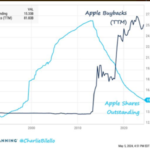Diversification means holding various asset classes such as stocks, bonds, gold, cash, etc. across various geographical regions like developed, emerging, frontier markets. One cannot try to gain from diversification by simply owing an index fund or holding a bunch of stocks of the same asset class or type. For instance, owing a large-cap index fund or a portfolio of only large cap stocks is not the right way to diversify a portfolio. Large-cap stocks do not always perform better and earn a higher return than mid and cap stocks. So in order to diversify one’s portfolio it is wise to hold assets of all these types for the equity portion. In a recent article Jason Hollands of Tilney Group, UK discussed one way to obtain real diversification using the example of the benchmark indices for the UK equity market.
An excerpt from the piece:
I am however a big believer in genuine diversification, whether that is across asset classes, geographic markets, companies of different sizes and stages of development and indeed investment styles. Over the long run, both small and mid-cap shares have beaten the FTSE 100, convincingly so in the case of mid caps.
When you deconstruct the FTSE All Share index, the breakdown between its exposure to large, medium-sized and smaller company constituents by number of individual companies is radically different to what you end up with once market-cap weighting is applied as the following tables shows.
Index No. of companies FTSE All Share constituents (%) FTSE All Share market cap (%) Five-year total return (%) FTSE 100 101 15.9 80.4 +51 FTSE 250 250 39.4 16.0 +93 FTSE Small Cap 284 44.7 3.6 +104 FTSE All Share 635 100 100 +57 Now here is a quick back of a fag packet piece of analysis: imagine if you had invested across these three parts of the market (large, mid sized and small) over the last five years in proportion to the number of constituents rather than based on market capitalisation.
Well, instead of getting the 57 per cent return delivered by the market-cap weighted FTSE All Share Index over this period, you’d be looking at something more like a 91 per cent return!
Source: The dangers of thinking FTSE 100 shares are safe, Money Observer, Feb 22, 2017
Note: All the returns shown above are in local currency (GBP)
Three reasons why small and mid-caps beat large caps in the long run are:
Large companies are generally considered safer than their smaller peers. Hence smaller companies grow faster and their stocks perform well as more risk means more rewards.
Many large firms are market leaders in their areas and they have been around for a long time. So they tend to be behind in innovation and usually are a huge bureaucratic mess.
Small companies can react to market changes quickly and hence reap the benefits whereas large companies cannot adjust to market changes fast.
So the key takeaway is that investors should not avoid mid and small cap stocks since large stocks alone can seem to offer plenty of diversification. But to generate a higher return and to benefit from the process of diversification it is important to hold all of the asset classes.
Related ETF:
- iShares MSCI United Kingdom ETF (EWU)
- iShares FTSE 250 UCITS ETF (MIDD)
- iShares MSCI United Kingdom Small-Cap ETF (EWUS)
Disclosure: No Positions
Update:
But see: Big Machine: Why Large Caps Are Likely to Outperform, Schwab



